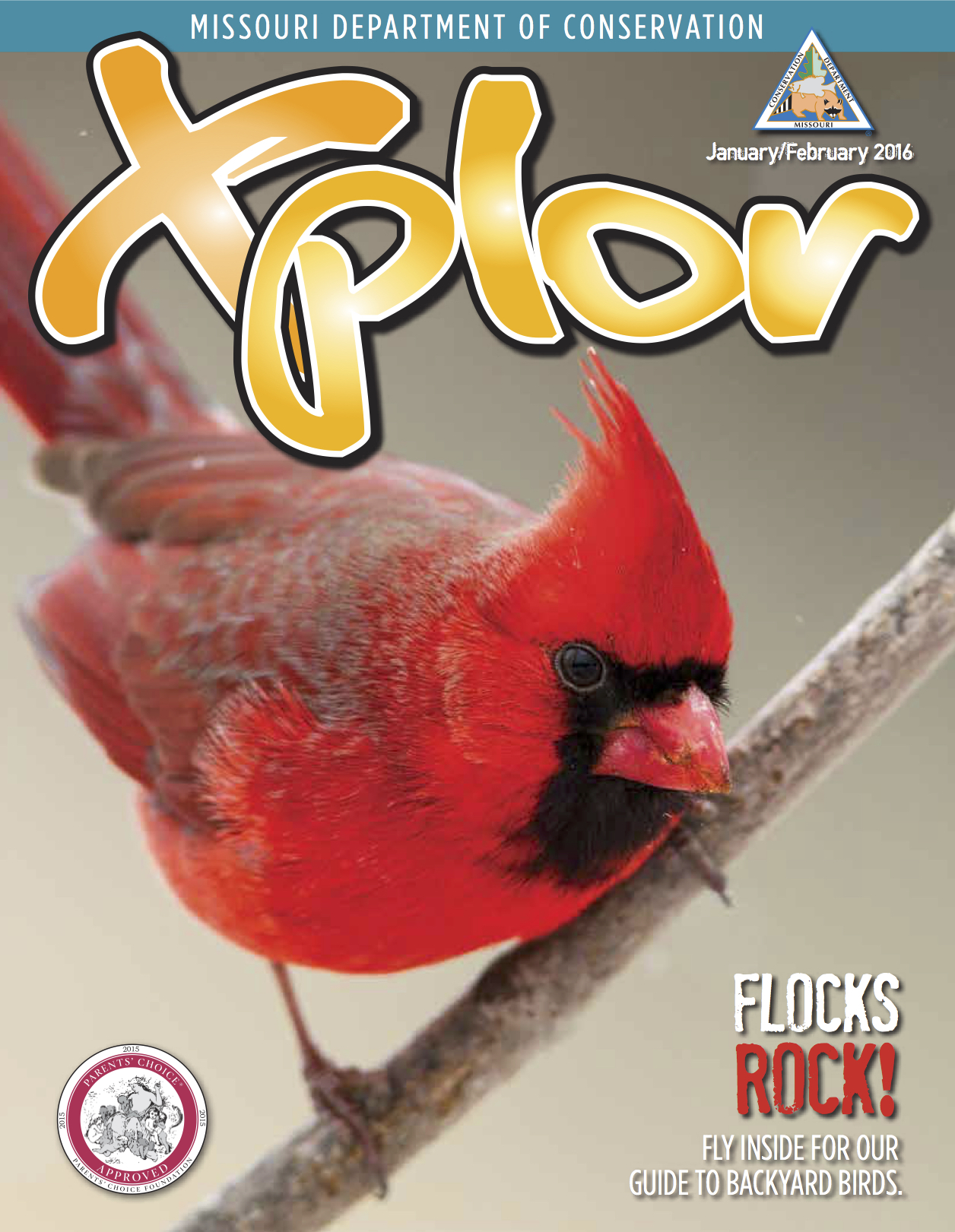Don’t stay inside when the snow gets to blowing. Head into the wild to see nature coming and going. (Just don’t forget to bundle up!)
Look
If you’re walking through a pine or cedar thicket, and you see what looks like white paint spilled down a tree, look up. The paint is probably owl droppings, and there’s a chance the bird is snoozing somewhere up above. The dense branches shelter sleepy owls from wind and snow.
Take a Closer Look
On sunny winter days, look closely at the ground around tree trunks. You might see what looks like pepper dusting the snow. The “pepper flakes” are tiny insects called snow fleas. Snow fleas — which aren’t actually fleas — have two tails that are tucked underneath their bellies and held in place with hooks. When the flea wants to flee, it releases the hooks, the tails spring out, and the flea flings forward.
Look
White-tailed deer drop their antlers from late December through February. A buck’s loss can be your gain. Search for “sheds” on south-facing hillsides, in crop fields, and along brushy stream banks. Deer trails also may lead to a buck’s displaced headgear.
Look
he large leafy nests you see in the tops of trees don’t belong to birds. Squirrels build them by piling layer after layer of leaves inside a framework of branches. When the leaf pile is big enough, the squirrel digs out a cozy hole in the center in which to sleep.
Heads Up!
To stay toasty on the trail, dress in layers. If you get hot, peel a layer off. If you get chilly, put one on.
What Happened Here?
Yellow-bellied sapsuckers drill tidy rows of shallow holes into living trees. When sweet sap leaks out, the little woodpeckers return to lick it up.
Listen
If you hear birds but can’t see them, hiss through your teeth to make a loud pish- pish-pish sound. This raspy noise mimics the alarm call of a wren or chickadee, and curious songbirds will often emerge to investigate.
Did You Know?
Eastern cottontail rabbits may stain snow pink, red, orange, or brown with their urine (pee). The colors are caused by pigments in plants the rabbit has recently eaten. Take-home point: Don’t eat yellow snow — or any other color that’s not white!
And More...
This Issue's Staff
Les Fortenberry
Karen Hudson
Regina Knauer
Angie Daly Morfeld
Noppadol Paothong
Marci Porter
Mark Raithel
Laura Scheuler
Matt Seek
David Stonner
Nichole LeClair Terrill
Stephanie Thurber
Cliff White






















